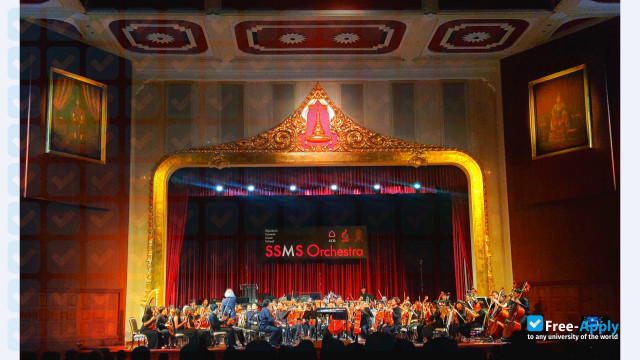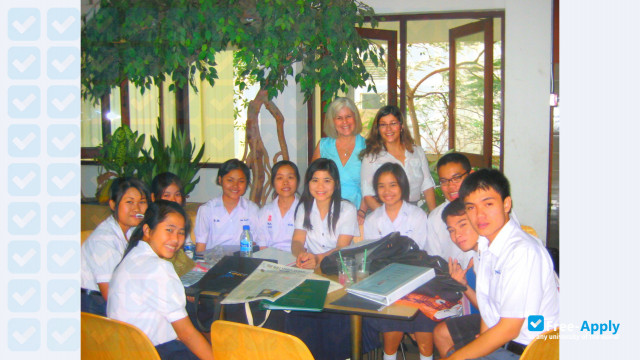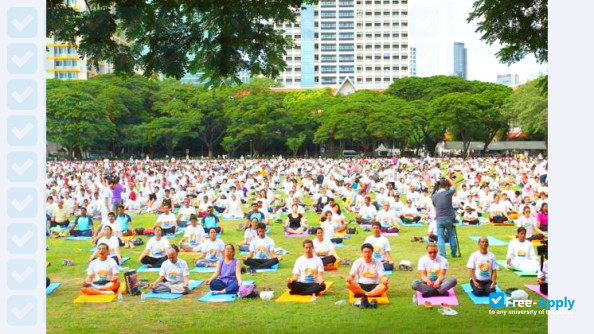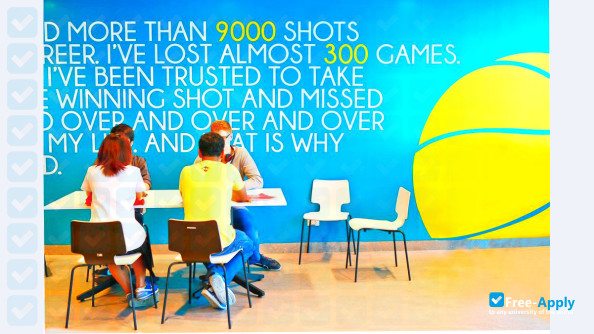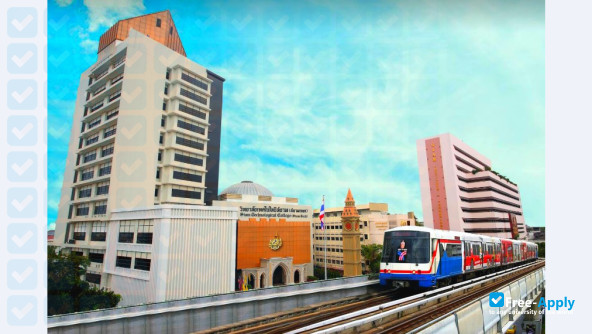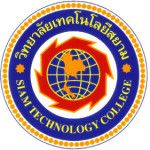About the university
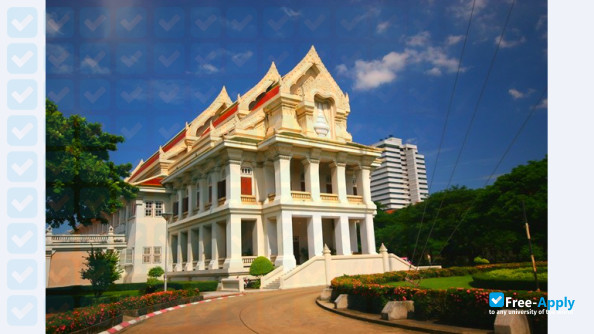
Thailand’s first institution of higher learning officially came into being in March 1917. The groundwork and preparation, however, took place more than a century ago. The worldwide economic, social and political changes in the late nineteenth century contributed to Siam’s decision to adapt in order to avoid being colonized by Western powers (“Siam” became “Thailand” in the year 1939). Thus, King Chulalongkorn (Rama V) introduced a royal policy to strengthen and improve the government so the country could successfully resist this tide of colonialism. One of the major parts of this policy was to improve the Siamese educational system to produce capable personnel to work in both the public and private sectors. As a result, a school was founded in 1871 at the Royal Pages Barracks within the Grand Palace compound. Later, in 1882, King Chulalongkorn developed this school and gave it the name “Suankularb”. In the same year, the King also established other schools, the Army Cadet School, the Cartographic School, the School for Princes and the School for Dhamma Studies. “…All of our subjects, from our royal children down to the lowest commoners, will have the same opportunity to study – be they royals, nobles or commoners…” This quote showed that the King did not forget common citizens. He had a policy to set up schools throughout the kingdom, together with institutions of higher learning. He insisted that “…Education in this country is the first priority, which I am determined to develop…” In 1899, Prince Damrong Rajanupab, a younger brother of King Chulalongkorn who was the Minister of Interior at the time, submitted a proposal to found the Civil Service Training School with Phraya Wisutsuriyasak (M.R. Pia Malakul — who later assumed the title of Chao Phraya Phrasadej Surendradhibodi) as the principal. However, since the school’s students had to work as royal page trainees in their third year of study before graduation, the name of the school was changed to the Royal Pages School in 1902. The Royal Pages School progressed steadily and produced an increasing number of graduates for the government each year. However, King Vajiravudh (Rama VI) saw that the original intention of his father, King Chulalongkorn, was to establish an institution of higher learning. While, at the beginning, the course of study focused on government, over time, the curriculum expanded to include more disciplines to meet the expanding needs of the kingdom. Such disciplines included law, international relations, commerce, agriculture, engineering, medicine and teacher education. Thus, King Vajiravudh ordered that the Royal Pages School become an institution of higher education and gave it the name the “Civil Service College of King Chulalongkorn” on January 1, 1911. The Civil Service College then used proceeds donated by members of the royal family, government officials and ordinary citizens to erect a statue of King Chulalongkorn the Great. After the statue was completed, about eight hundred thousand baht remained in the Royal Treasury Ministry. With interest the sum grew to be 982,672 baht. King Vajiravudh then gave this sum to be used as the original capital of the college. Furthermore, he graciously donated the palace of his brother, the late Crown Prince Vajirunhis, as the site of the college and gave a large plot of land, about 523 acres, adjacent to the palace in the Patumwan district, for future expansion. Later the Administration Building was constructed as the college’s first building. After the Civil Service College had been in operation for some time, King Vajiravudh considered that it had achieved a level of readiness and so, on March 26, 1917 he declared that it should become Chulalongkorn University, a memorial to his father. The newly founded university was under the supervision of the University Affairs Department, Ministry of Education. Phraya Anukijwithoon was the first principal (the title was changed to Rector in 1935). There was a University Council, which was responsible for policy making, planning and advising on the affairs of the university. Prince Damrong Rajanupab was the Chairman of the Council, and the principal of the university was the Secretary. When it was first founded, the university had 380 students taking classes in four faculties located on 2 campuses. The Faculty of Medicine was located at Siriraj Hospital, while the Faculties of Public Administration and Engineering were housed in the Administration Building and the Faculty of Arts and Science in Prince Vajirunhis’ palace in Patumwan district. The Law School was under the responsibility of the Ministry of Justice until the university was ready to take over, and the Teachers’ Training School was handed over to the Ministry of Education. In 1923, the university accepted high school graduates to study in the Faculty of Medicine, which received support from the Rockefeller Foundation to organize a Bachelor’s degree program. Five years later, the first group of 18 graduates finished their studies, and received the first degrees to be awarded in the kingdom. In 1929, the Faculty of Public Administration became the Faculty of Law and Political Science. In 1933, after the establishment of the constitutional monarchy in 1932, the government transferred this faculty to Thammasat University, which was established in 1934. The result was that Chulalongkorn University had only three faculties during that time. The development of Chulalongkorn University continued. From 1934 to 1958, the university emphasized improvement of undergraduate education; thus, more faculties were established. In 1961, the university established the Graduate School followed by research centers and institutes.
Education programs
Economics
Economics
Bachelor of Economics
Thai
Language of instructions
Full-time
Study mode
$700
Fee for international students
$700
Fee for domestic students
PR
~ $700 / year
PR
Bachelor of Communication
Thai
Language of instructions
Full-time
Study mode
$700
Fee for international students
$700
Fee for domestic students
Philology
~ $700 / year
Philology
Bachelor of Philology
Thai
Language of instructions
Full-time
Study mode
$700
Fee for international students
$700
Fee for domestic students
How to apply to the university
Choose a program
Press “Apply now” button
Send an application form
Complete admissions tasks
Go to study
To apply to Chulalongkorn University follow these steps. To get more information about the university and the admissions process, you can use the live chat to contact a university representative.
Required documents for admission
When applying for admission to Chulalongkorn University in Thailand you should prepare all required documents. Request a list of necessary documents directly from a university, as it may vary for different countries. Using our live chat, you can also ask for sample documents.
- Application fee
- Family Details
- Online Application form
- Letters of reccomendation (MA, PhD)
- Health and Life Insurance
- Student visa
- Proof of fee payment
- Passport
- TOEFL Certificate
- Resume/CV (graduate, postgraduate)
- IELTS Certificate
Why people choose this university
Free Apply is not responsible for the content of this page. Through the Site, Free Apply provides an online catalog which you can use to find different types of educational institutions. It’s possible for a new university to be registered by any user, however only verified university representatives will be able to manage, reply in chat and make changes to a university page. Once the University registers its official representative, it has the right to block access for others to edit the information. Further control over the content will be carried out by the representative of the University. Registration with the Free-Apply.com catalog is free.



